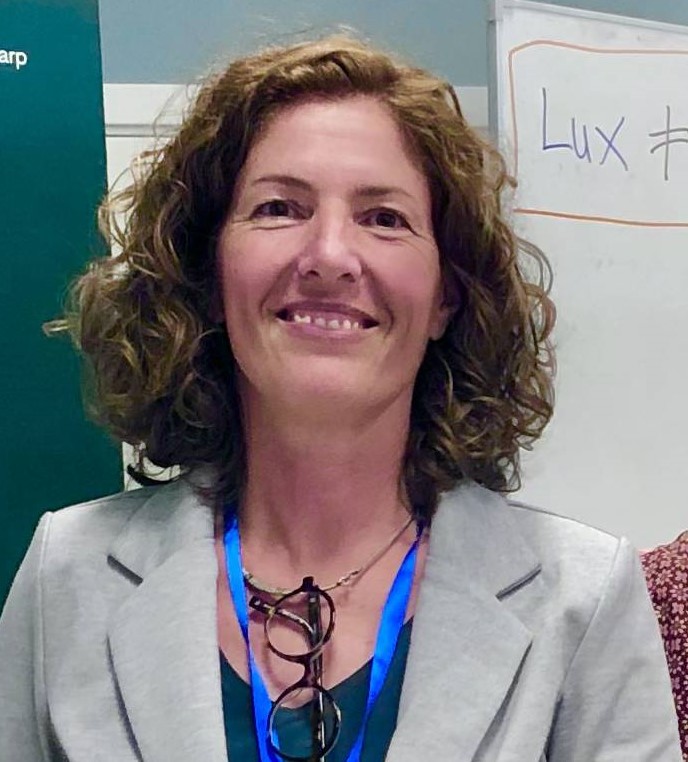Navigating urban regulations
But there are of course also challenges with this kind of agritecture.
– The investment is substantially higher than for a greenhouse on ground. Here, we need an elevator and stairs, and more structural elements than conventional greenhouses as these most comply with architectural building codes. It can be difficult to navigate urban regulations, but with the support of the city, it is possible to negotiate. You also get light pollution close to building inhabitants, but this can be solved with blackout curtains and timing of artificial lighting.
– In Sweden, most of the roofs are not flat in the city center. Therefore, there could be more potential in peri-urban areas, which normally have a lot of warehouses. Some buildings have structural constraints and would perhaps need reinforcements, but the weight is not normally the biggest issue.
Very useful to visit real projects
The project group had digital meetings every week and met for one day each month at Campus UItuna in Uppsala.
– The project resulted in many things. We are producing a book on rooftop greenhouses, and we have formed a network. We have contact with many organisations and one PhD projects on rooftop greenhouses has started. The project attracted some interest in the media, I was interviewed by TV4, and news articles have been written about the project.
The group did a study visit to rooftop greenhouses in Germany and Belgium.
– It was extremely useful to visit real projects. In Germany, we saw a well-functioning building led by engineers. The design was very nice and effective, but the food production was not in focus. There was very little production in fact, as if they had forgotten that this was the whole goal. Maybe the project leader should not be engineers…
– In Agrotopia in Belgium, we saw an impressive research center in horticulture with great production and a beautiful building. However, the building had some issues with overheating. We understood the need for appropriate solar shading. There was too much glazing in this case. The focus of this project was horticulture, and the project was led by horticulture perspective, but the engineering lacked a bit. So, depending on who is in charge there are different results. This really highlights the importance of interdisciplinarity in rooftop greenhouses!
Smaller cities can be surprisingly innovative
This IDA project gave the researchers the exposure needed to start a real project in Motala together with Bostadsstiftelsen Platen.
– We have also started discussions with a company for developing a project hopefully in Malmö, but the discussions are still in early phase. I think the rooftop greenhouse technology is especially relevant for large cities such as Stockholm, Gothenburg, and Malmö. But we are happy to start a pilot project with Motala. Sometimes people in smaller cities are surprisingly more innovative and willing to take risks!
– A lot of people have contacted us, for example Skanska, but we would also need to have some representatives from the cities to be on board and help us drive this forward. We have not had a lot of time to devote to this yet, but we will continue to make contacts.
An opportunity to focus on conversations
How was it working with other researchers from different disciplines?
– Working in an interdisciplinary project has worked very well and been a really nice experience full of learning and exchanges. As a bonus, we have become friends with each other!
– Sometimes it was hard to start with a blank page. We had to invent a work plan and then we were a bit stopped by the leaders who wanted us to emphasize on interdisciplinarity conversations, not on being ultra productive. Personally, I found it difficult, I needed to have an action plan and to move forward as in any externally funded research project. But at the end, this gave us the opportunity to focus on our conversations and not necessarily rush into production. It gave us a bit of breathing space, which we normally do not have in externally funded research projects. We had time to think for once, which I am grateful for.
Catching crucial information with people from different backgrounds
What are the advantages of working in an interdisciplinary way?
– You catch some information that is crucial for the project which you would not have known otherwise. One example is the connection between natural ventilation and plant protection aspects or between light pollution and geographical positioning of the project or between business model and geographical positioning of the rooftop greenhouse.
– All these elements are important and linked, but if you only start with an engineering perspective, you will miss some very important aspects. The business model of these projects is crucial. We tend to focus too much on the building and not enough on what the rooftop greenhouse is going to produce for whom and how the produce is going to be distributed.
Make a work plan with breathing space
Does Marie-Claude have any tips for other researchers who would like to work in interdisciplinary projects?
– Yes, allow enough time for discussions. Make a work plan but give it a breathing space. Select people who are willing to collaborate and open towards each other. Have a friendly attitude. And plan for a study trip, this contributed to unite the group, and we were so looking forward to it.




